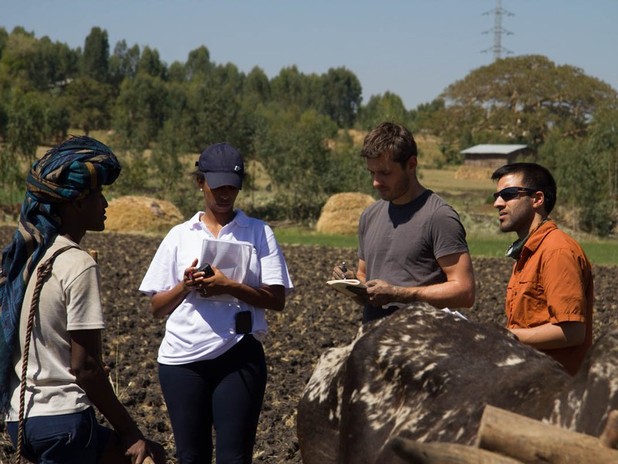March 17, 2014
Ravi Prakash and his IDEO.org team explain the new design direction for their teff seed planter, making a human-centered shift from maximum yield to maximum usability by Ethiopian farmers.



When we spoke with farmers in Ethiopia, we learned that they (like most anyone) valued their time and money. If they were going to buy a tool, that tool needed to both make their life easier and be a quality product. There is nothing novel about this. It makes sense that everyone, no matter their income level, wants the same thing. Our problem was that these desires were at odds with what our teff row planter was supposed to do.
At the outset of our project, we had an ambitious set of requirements. Among the list, our seed planter needed to plant seed and fertilizer underground as this increases the crop yield as compared to planting on the surface.
It soon became apparent that planting underground would be the driving force behind the design of the entire planter. Once we returned to Ethiopia for field testing, we tried pulling our initial prototypes through the soil. It was so labor intensive that we quickly realized we would need oxen to be able to cut through the soil for any appreciable distance. We also knew from firsthand experience in the field that oxen don’t like walking in a straight line. So if this planter required oxen, we might actually be adding work to the farmer’s plate. In addition, each soil type varied pretty drastically and would likely require its own unique device in order to cut through soil successfully.
Hence, we started asking ourselves, “what if we planted on top of the soil?” The benefits came flooding out. A planter that did not have to pierce through the soil would be lighter, easier to transport, operable on all soil types, cheaper, and would not require oxen. Compared to our former model, these qualities would certainly increase adoption among farmers and would still offer a sizeable impact. So we set out to see if this was an option!
When discussing these options with our client, the Ethiopian Agricultural Transformation Agency (ATA), we knew that our biggest hurdle would be the fact that planting on top of the soil doesn’t maximize the yield for teff. However, we were confident that our proposed planter would still significantly increase the yield due to the reduced seed rate.
Though initially hesitant, the ATA soon saw the benefits of this proposed change and quickly became advocates of the shift in our design direction. We now had the green light to design a planter that, although not maximizing teff yield, would ultimately be much more user-friendly and accessible to farmers across Ethiopia. And that is where the importance lies. Afterall, what’s a new product if it isn’t useable and adopted by the very people it’s designed for? As ATA’s CEO, Khalid Bomba, said, “Don’t go for perfection, go for agricultural improvement.” Because sometimes going for perfection can get in the way of making progress.

